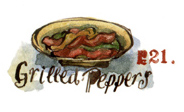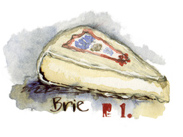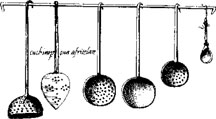Some of the best dishes, I believe, come in the most untraditional and contradictory ways. For example, one of my favorite desserts is a souffle cake. It’s essentially a fallen-in souffle. “This dessert may look a little odd – but it’s delicious.” Same with the recipe I present to you this evening–a wilted salad. Even more so, a wilted dinner sized salad. For a carnivore-leaning omnivore like me, this seems just wrong. But strangely enough, this worked for me, and perhaps you might some value in it as well.
Wilted Mesclun and Chevre with Roasted Tomato and Bacon vinaigrette
Ingredients
3 cups mixed greens and 3 cups baby spinach combined in a large bowl
1 small red onion, peeled and sliced 1/2″ thick
4 strips bacon, cut into 1/2″ pieces
1 large heirloom tomato, cut in half
1/4 cup olive oil
2 cloves garlic, peeled and chopped fine
1/4 cup combination of chopped parsley and thyme
3 ounces of crumbled Ile de France goat chevre plus extra for garnish
For the vinaigrette:
1/2 cup cooked, crumbled bacon
1/4 cup roasted tomato skins
3/4 cup dry sherry
1/4 cup apple cider vinegar
1 cup walnut oil or olive oil
2 tsp honey
1 tsp dijon mustard
Salt and pepper to taste
Read the rest of this entry »











